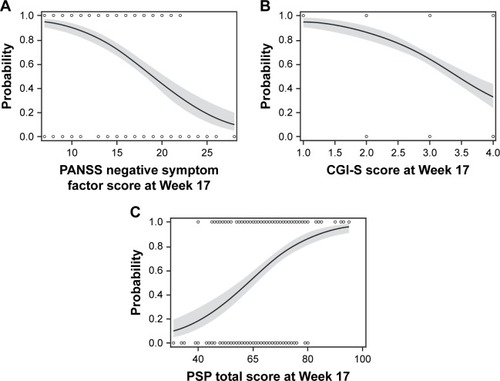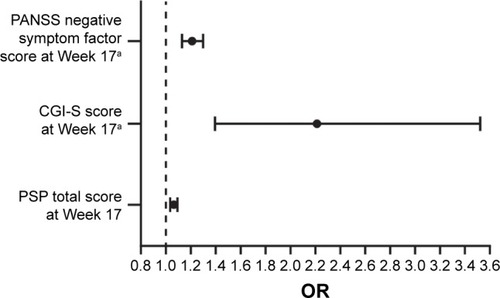Figures & data
Table 1 Outcome measures at Week 17 of PP1M treatment based on 6-month remission status to PP3M
Figure 1 Predicted probabilities of remission using the univariate model for each significant predictor of remission: (A) PANSS Marder negative symptom factor, (B) CGI-S, and (C) PSP total score.a
Abbreviations: CGI-S, Clinical Global Impression-Severity; PANSS, Positive and Negative Syndrome Scale; PSP, Personal and Social Performance.

Table 2 Univariate logistic regression model of predictors of 6-month remission
Figure 2 Variables predicting achievement of remission with PP3M during the double-blind treatment phase (multivariate analyses).
Abbreviations: CGI-S, Clinical Global Impression-Severity; PANSS, Positive and Negative Syndrome Scale; PP3M, paliperidone palmitate 3-month formulation; PSP, Personal and Social Performance.

Table 3 Multivariate logistic regression model of predictors of 6-month remission
